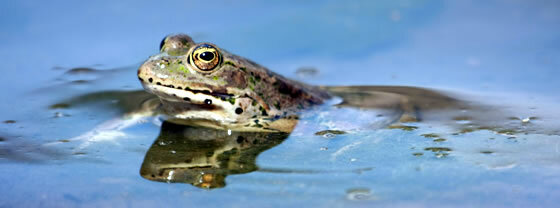Amphibian Characteristics
Biology / / July 04, 2021
Amphibians are a subgroup of vertebrate animals, which have gill respiration during the first part of their life and lung respiration in the adult phase, after a series of transformations that happen to them during their growth, a phase known as metamorphosis, in which morphological changes are made in the animal.
They are generally oviparous, laying their eggs in the aquatic environment, in which they lay their eggs. which are protected from the environment by a membrane and bound together, by a substance gelatinous. However, there are species of viviparous amphibians, such as some varieties of Apods, which possess the characteristic that their larvae develop within the mother, but most amphibians are oviparous.
They are the first group of vertebrate animals to adapt from the aquatic to the terrestrial environment, spreading throughout the planet and being the dominant species for millions of years.
Reptiles, birds and mammals evolved from the first amphibians, which are now extinct, but there are still many species of them.
It is believed that there are between five thousand eight hundred and seven thousand different species of amphibians, existing in diverse ecosystems in the different varieties that have evolved, dividing these into three major groups:
- Anurans, which are tailless amphibians, (in this group are frogs and toads).
- Urodelos, are amphibians with tail (in this group are salamanders and newts).
- Gymnophiona or Apods, they are amphibians of morphology devoid of limbs, morphologically similar to snakes, (in this group are the caecilians).

Amphibian characteristics:
They are vertebrate animals that live a part of their life in the aquatic environment, passing after a metamorphosis to living in the terrestrial environment, adapting their respiration from the uptake of aquatic oxygen through gills, to the uptake of air oxygen, through the development of lungs or through the skin.
They have the peculiarity of having a different system from mammals; in which blood circulation is double, because they have a smaller or pulmonary circuit, which carries venous blood to the lungs and brings it back to the heart and the major or general circuit, which carries arterial blood to the rest of the body and brings venous blood back to the heart. It is incomplete, because venous and arterial blood mix in the only ventricle that amphibians have, on the right side of the heart venous blood circulates While arterial blood circulates on the left side, but since there is no interventricular septum that separates the two ventricles, arterial and venous blood are put together.
Its reproduction is oviparous; Their sexual reproduction is through fertilization and external embryonic development, depositing their eggs in water sources, where their larvae develop until adulthood. Except in some species of amphibians in which the larvae develop inside the body of the mother, as in some species of Gymnophionas.
They have a different skin from that of other groups of animals, which unlike fish, reptiles, birds and mammals, which have scales, feathers and hair, respectively, Amphibians have a smooth skin that contains glands that secrete a mucous substance that keeps them moist, and can be smooth or rough depending on the species. Many species have the characteristic of having glands that secrete poisonous substances, with which they defend themselves from predators.
They are poikilothermic or pecillothermic animals, that is, they do not have a temperature regulating mechanism, so they have to use heat sources such as the sun or geothermal in the case of the Apods, to keep warm, so that in winter climates they enter lethargic periods or hibernation.
Some species of amphibians have the ability to go into hibernation if there is no enough water in the environment as in the case of bull toads that hibernate by burying themselves until the time of rains.
They have the peculiarity that several species of amphibians (Frogs and Toads), the digestive system is of great size, in the mouth, esophagus and stomach, with which they can eat large prey, which they swallow whole.

